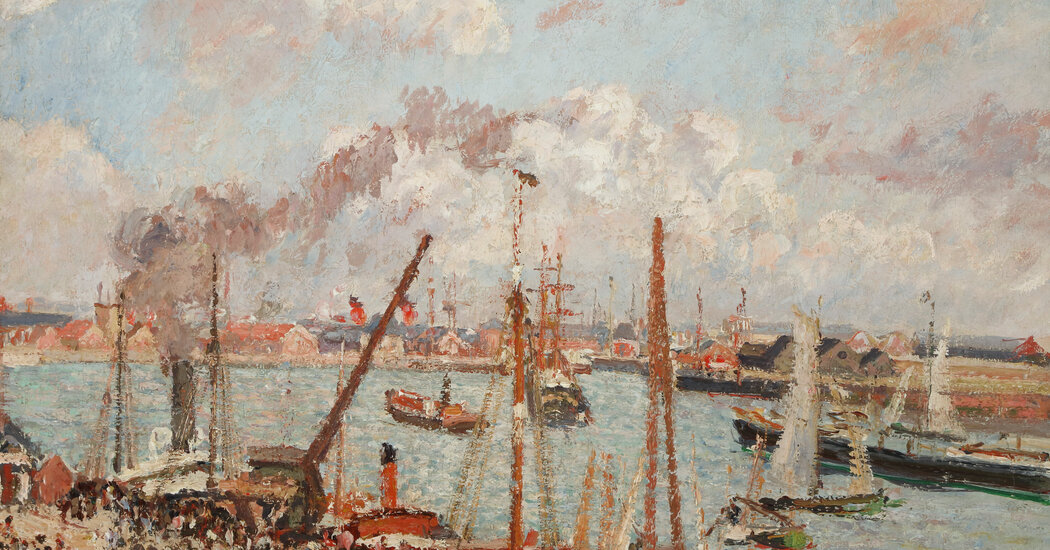A Pissarro painting that was central to a dispute between the heirs of a Jewish couple whose art collection was confiscated by the Nazis before World War II and a Jewish family who bought it in 1994 is set to be released next month after the two parties auction sold. reached agreement.
The details of the settlement have not been disclosed, but Christie’s has placed an estimate of $1.2 to $1.8 million on the work, “The Anse des Pilotes, Le Havre,” which it plans to sell on May 14 in New York. .
Ludwig and Margret Kainer left behind a collection of art, including the Pissarro, when they left Germany in 1932 when Hitler came to power. Their relatives have filed a claim on the painting since 2015, and last year sued Gerald D. Horowitz’s family to reclaim it.
Family lawyers said Horowitz bought the painting from a New York dealer after checking to see if it had been stolen.
One of the reasons the dispute attracted interest was the fact that it marked the first time that Stuart E. Eizenstat, a diplomat and attorney who helped write the historic Washington Principles used around the world to guide restitution claims , became involved in an individual restitution case.
In announcing the settlement, the parties released a statement stating, among other things, “This resolution is fully consistent with the ‘just and fair solution’ of the Washington Principles on Nazi-confiscated Art,” acknowledging that this may vary according to the facts and circumstances surrounding a specific case.”
In an interview, Mr. Eizenstat said he had agreed to work on behalf of the Horowitz family because of the family’s excellent reputation in the Atlanta Jewish community and because he is a childhood friend of Mr. Horowitz’s wife, Pearlann Horowitz, who he has known. since high school.
“We were convinced — as the settlement document shows — that they purchased this painting in full in good faith,” he said, adding that the resolution “justified” the principles he helped negotiate.
The oil on canvas, depicting a harbor scene, was painted by Pissarro in 1903 and was one of his last works before his death that year.
After leaving Germany, the Kainers were unable to safely return to their home after the Nazis seized power, and in their absence their art collection and other world-class furniture were confiscated by the Berlin tax office and sold on an auction in Berlin to pay a government grant. air passenger tax, a financial tool often used to punish Jews fleeing the country.
In 2014, the Horowitz family lent the work for exhibition at the High Museum of Art in Atlanta. It was around this time that it was identified by Mondex, a company pursuing restitution claims and representing Kainer’s heirs.
The Kainers, who eventually settled in France, died without children in the 1960s, and the heirs who claim the painting are the children and grandchildren of cousins.
Christie’s said the settlement resolved the dispute over the painting’s ownership and the title of the work would pass to the successful bidder.
Several other paintings from Kainers’ collection that were sold next to the Pissarro in Berlin in 1935 have already been treated as looted. For example, Christie’s also sold Edgar Degas’ Danceuses, once owned by the Kainers, for nearly $11 million in 2009 under the terms of a refund agreement.

